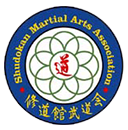Tachi Uchi No Kurai and the Three Initiatives
By Suino, NicklausThis article first appeared in the "SMAA Journal," Volume 21, Issue 1.
How much do you know about iaido?
Have you ever heard of a paired kata?
While modern iaido consists principally of solo practice, there are a number of paired kata in Muso Jikiden Eishin Ryu iaido (founded in the late Muromachi period, circa 1590). These kata take the form of ordered sets of waza (“techniques”) in which the practitioners act out martial scenarios. First among these is Tachi Uchi no Kurai (太刀打之位, “The State of Crossing Swords/The State of Striking Swords”). Tachi Uchi no Kurai is performed by two practitioners each using a single long sword.
The teaching and practice of paired kata is meant to communicate, among other things, how swordsmen interact in contest. Moreover, prescribed paired kata provides the context to highlight and practice some combative principles in isolation and makes them accessible to a wider audience. This complements a student’s education in solo practice, where one focuses on more intrapersonal aspects. For example, in solo practice we study body mechanics, such as methods for putting force into the sword, while in paired practice we study the dynamics of distance between swordsmen and its implication on the outcome of a contest. Aside from what is transmitted through the kata, we can gain additional insight into the aspects of swordsmanship particular to paired practice through the writings of skilled swordsmen, such as Miyamoto Musashi and Yagyu Munenori, and through first-hand experience under the appropriate restrictions to maintain safety, e.g. kendo.
Musashi’s Three Initiatives and Munenori’s Three Rhythms describe the relationship of intention, decision-making, and action between two swordsmen in contest. Musashi’s Three Initiatives are the Initiative of Attack, the Initiative of Waiting, and the Body-Body Initiative. Musashi writes, “The Initiative of Attack is when I attack my opponent. The Initiative of Waiting is when my opponent attacks me. The Body-Body Initiative is when both my opponent and I attack at the same time.”
To explain this principle more fully, we turn to Takuan Soho, who writes, “To speak in terms of your own martial art, when you first notice the sword that is moving to strike you, if you think of meeting that sword just as it is, your mind will stop at the sword in just that position, your own movements will be undone, and you will be cut down by your opponent. This is what stopping means.” Thus, we understand that in a rapidly changing environment one must constantly absorb information about what is happening and make quick decisions about how to adapt. To draw an analogy to chess or the Japanese board game of go, one must endeavor to play a few moves ahead. If the environment changes too rapidly, one misunderstands, or if he lets his mind dwell on something then he is more likely to make poor decisions or be unable to adapt. Soho calls this dwelling “stopping,” “attachment,” or “sickness of the mind.”
The Initiative of Waiting, on the other hand, can be understood as moving through the decision-making cycle faster than one’s opponent without outwardly driving the situation. That is, one reads the situation and the intent of the opponent and formulates an advantageous choice more rapidly than the situation is changing. In this sense one’s mind is ahead even while one’s body is following. This is in contrast to the Initiative of Attack where both the mind and body lead. In a similar vein as in the Initiative of Attack, victory is found where the opponent’s mind gets stuck, or he makes a mistake. It is at this moment that reactive actions change to proactive actions to take advantage of the moment.
Both the Initiative of Attack and the Initiative of Waiting describe ideal situations in which one’s mind is sufficiently nimble to lead the evolving situation. The Body-Body Initiative describes the gray area where neither combatant has obtained the Initiative of Attack or Waiting.
Considering the Three Initiatives, and examining Tachi Uchi no Kurai in their light, can sharpen small but important features of the kata. This can add more dynamic character to its performance. Moreover, and most importantly, this study adds interesting layers to the practice of Tachi Uchi no Kurai, and practice in general, that are fascinating and enjoyable to explore.
Want to be Part of an International Martial Arts Association?
SMAA offers five divisions of authentic Japanese martial arts: aikido, iaido, judo, jujutsu, and karate-do. If you want to part of a prestigious international martial arts association, give us a call at (734) 720-0330 or submit a contact form here. We look forward to helping you develop your art!

